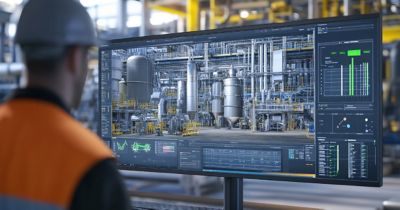Deemed the lightest structural metal on Earth, magnesium is increasingly popular in manufacturing. In fact, the global magnesium alloys market is expected to exceed $6 billion by 2027. Magnesium alloys — mixtures of magnesium with other metals like zinc and aluminum — are favored for their strength-to-weight ratio, which increases their flexibility and castability for many manufacturing processes.
RAUCH Furnace Technology GmbH (RAUCH FT) is very familiar with magnesium alloys. The Austria-based company is considered a world market leader in magnesium melting systems and provides high-quality melting technology solutions for magnesium, zinc, and nonferrous metals.
Magnesium alloys are processed in melting furnaces, like the RAUCH Magnesium melting furnace MSO series, at extreme temperatures and pressures. One of the most important components of the furnace is its crucible — the unit, pot, or container designed to hold materials for melting. A malfunction with the furnace or its crucible can cause massive delays. For this reason, maintenance is key to its operation and performance.
Last year, with the help of the Austrian and German offices of CADFEM, an Ansys Apex Channel Partner, RAUCH integrated Ansys simulation software to develop a predictive maintenance approach. By adopting Ansys’ digital twin technology and structural, fluids, and optimization software, RAUCH reduced the risk of furnace failure by digitally monitoring the crucible.
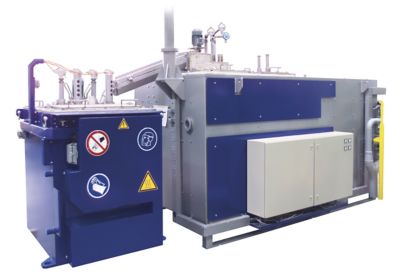
RAUCH Magnesium melting furnace MSO1200B has a melting capacity of 1,200 kg/h (right) and the RAUCH Magnesium melt container MSB600E (left) is used during the holding process with a crucible content capacity of around 725 kg and a maximum dosing quantity of 600 kg.
Integrating Digital Twins in Three Phases
The integration was a three-phase process. At first, engineers used Ansys Fluent fluid simulation software to perform computational fluid dynamics (CFD) calculations of melting fluids in the furnace chamber and chemical calculations of non-premixed combustion. The team coupled these findings with a parametric study using Ansys optiSLang process integration and design optimization software.
Ansys optiSLang software has several methods for design of experiments (DOE). Classical deterministic DOE, such as a grid, is suitable for a few parameters. However, if there are several parameters then better suited algorithms and advanced techniques are used like Latin hypercube sampling (LHS).
RAUCH engineers used the LHS method to select about 100 sampling points. Next, they evaluated the DOE using the adaptive Metamodel of Optimal Prognosis (AMOP) — one of optiSLang software’s automatic machine learning (AutoML) algorithms — and the resulting coefficient of prognosis (COP) matrix.
Essentially, a metamodel is a model of a model, and as its name suggests, AMOP is adaptive. This means that after the initial DOE, AMOP automatically creates a metamodel of prognosis for the outputs. It finds regions where the metamodeling is favorable and regions where new observations could improve quality. Based on this insight, AMOP automatically runs new simulations for future iterations. A modal analysis of the heat fluxes at the crucible surface was the first step toward model reduction and creating a functional mock-up unit (FMU).
While the first stage involved fluids and optimization, the second stage involved structures. The team used Ansys Mechanical structural finite element analysis (FEA) software to analyze characteristics such as transient effects during jet pumping and other processes. The Ansys Parametric Design Language (APDL) finite element modeling tool helped the team calculate local stresses based on transient effects while considering temperature effects and mechanical loads. A priori-defined measurement points for the crucible’s geometry informed and defined the thermomechanical reduced-order model (ROM). This portion of the workflow was guided by CADFEM.
Digital Transformation Across the Industrial Equipment and Manufacturing Industries
RAUCH’s shift toward predictive maintenance aligns with an upsurge of digital adoption across the industrial equipment and manufacturing industries. Mordor Intelligence reports the global market size for digital transformation in manufacturing is estimated at more than $367 billion for 2024 and is forecasted to exceed $876 billion by 2029.
Simulation, digital twins, and other computer-aided engineering (CAE) tools contribute to this digital transformation by improving the efficiency, reliability, durability, and performance of industrial equipment.
AI/ML Works Behind the Scenes
Artificial intelligence (AI) and machine learning (ML) methods are applied to design and development in a wide range of industries, including manufacturing. Ansys’ optimization solutions offer built-in capabilities that leverage these AI/ML methods. For example, optiSLang software uses state-of-the-art algorithms, including AI/ML, to automatically search for the most robust design configurations, which eliminates a slow manual process while increasing efficiency.
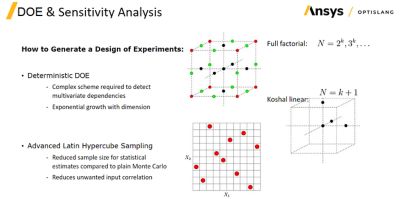
Ansys optiSLang process integration and design optimization software has several methods for performing a design of experiments (DOE), from classical deterministic DOE to more advanced techniques like Latin hypercube sampling (LHS).
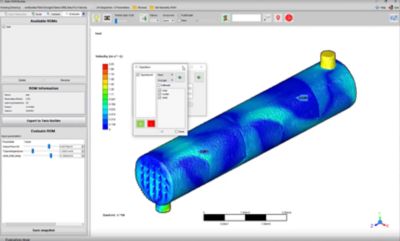
Ansys Twin Builder software couples with Ansys multiphysics simulation to enable reduced-order modeling (ROM), which reduces model complexity and accelerates simulation workflows.
For the third and final stage, engineers created a digital twin model using the Ansys Twin Builder simulation-based digital twin platform, combining the measurements and the ROM with a live check on realistic output calculations. To expand its use, RAUCH embedded the digital twin model into a Python-scripted microservice to deploy it on an external cloud platform.
The microservice is provided by CADFEM’s digital twin consulting company, ITficient AG, and has two parts: a scheduler and a runtime system. The scheduler takes measurements from the physical die-casting cell sensors and passes them to the runtime system. The team used pre-processing calculations to prepare the input data for the model, while the ROM calculated the raw output data, which was then manipulated by a post-processing routine. One example of a routine developed with CADFEM is the approximation of a degree of utilization based on common standards.
The established workflow enables the team to address specific virtual sensors of interest. The scheduler takes the calculations of the virtual sensors and generates measurement points for the cloud environment. As a result, both the physical and virtual sensors can be accessed in the visualization of the cloud environment.
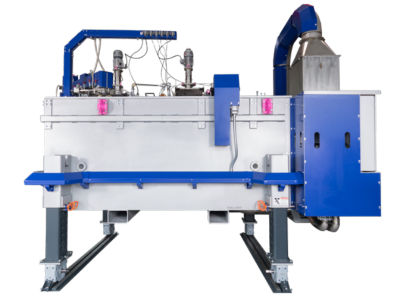
RAUCH Magnesium melting furnace MSO1100R has a melting capacity of 1,100 kg/hr and a crucible content capacity of about 1,550 kg.
Democratizing Simulation
Florian Sipek, head of research and development (R&D) at RAUCH, credits the successful integration to the support of strong partners.
“Especially in our case of a small-to-mid-sized company, we need to rely on a strong partnership,” he says. “Naturally, we are not able to depict all aspects of a digital twin.”
Sipek explains that RAUCH’s expertise resides mainly in CFD simulations, while CADFEM supports FEA and ITficient provides the microservice.
Although shifting from traditional maintenance to predictive maintenance requires an openness to digital tools, RAUCH’s experience demonstrates that it doesn’t require an abundance of simulation or digital twin experience. In fact, in many cases, digital tools help democratize simulation by using built-in algorithms that simplify otherwise time-consuming and complex processes.
An example of this is the ROM capability in Twin Builder software. When asked how Twin Builder software and the ROM function contribute to the efficiency and effectiveness of RAUCH melting furnace processes, Sipek acknowledges an improved workflow and customer satisfaction.
“The digitalization work is currently uprising even in the very traditional foundry industry,” he says. “We started with data logging and manual analysis, which was quite a problem at first, but over time our customers appreciate the [digital] effort and the results coming from the data, more and more.”
Looking Ahead
With one digital twin project completed successfully, Sipek hopes to integrate the technology with other equipment.
“The next step is the implementation of digital twins for large- and mid-sized furnaces,” he says. “The work at our customer’s site is very hard — high temperature, dirt, dust, and shiftwork. Good and motivated personnel for this purpose are hard to find. We want to make life easier for the people at the plant — and on the furnace — with our digital twin technology.”
RAUCH wants to make life easier for customers, too. Customer benefits achieved since the integration include:
- Minimized downtime
- Predictive maintenance
- Predictive cleaning
- Improved shift forecasting
- Solutions for process-based problems
- Increased crucible lifetime
- Real-time monitoring of furnace condition
- Precise training
- Reduction of cost of ownership
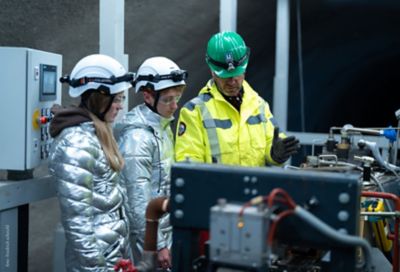
RAUCH engineers reduce the risk of furnace failure by digitally monitoring the crucible using Ansys’ digital twin technology and multiphysics simulation.

RAUCH Magnesium melting furnace MSO1500R has a melting capacity of 1,500 kg/hr and a crucible content capacity of approximately 2,830 kg.
“We learned in the last couple of years that the knowledge and know-how of a company can be accelerated massively by looking at the datasets and the interpretation of them,” he says. “In 2030, we should be able to transform every kind of data into assets for our customers and our own business. The digital twin is a large step forward.”
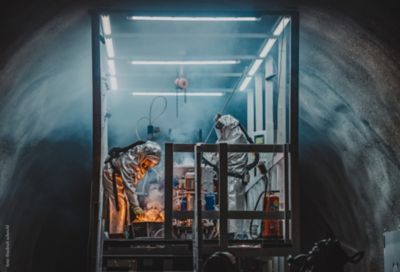
Magnesium alloys are processed in melting furnaces, like the RAUCH Magnesium melting furnace MSO series, at extreme temperatures and pressures.
To explore digital twins firsthand, request a free trial of Twin Builder software or the newly released Ansys TwinAI AI-augmented, simulation-based digital twin platform.
Just for you. We have some additional resources you may enjoy.
“In 2030, we should be able to transform every kind of data into assets for our customers and our own business. The digital twin is a large step forward.”
— Florian Sipek, head of research and development, RAUCH














